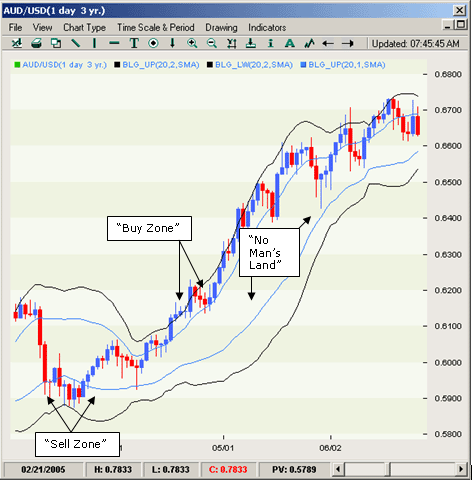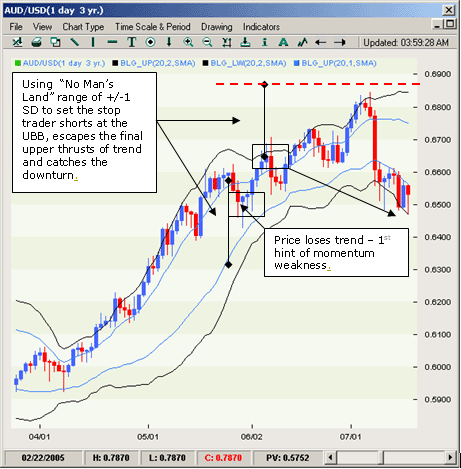Created in the 1980's by John Bollinger, Bollinger Bands are one of the most useful indicators when it comes to measuring the volatility of past price action. They contain a moving average of N periods as the middle line and two lines, one higher one lower, measured by a standard deviation (K) away. The typical amounts for N and K are 20 and 2, respectively. This means that the standard deviation of the higher and lower lines is 2, while the moving average period is typically 20. The measurement for the upper band is the MA + σ (standard deviation) and the measurement for the lower band is the MA - σ. This provides an area in which the price action normally resides, but movements beyond either of the standard deviations warrant action. The closer to the upper band the price action moves, the more overbought it is and it is more oversold for the closer it gets to the lower band.
As the price action moves above the upper standard deviation, and is considered overbought, it is a buy signal. Conversely, when the price action crosses below the lower standard deviation, and considered oversold, it is considered a sell signal. Anywhere in between the two is considered "No Man's Land", as shown in the image below.
That is only one strategy out of many to use the Bollinger Bands, another strategy is to buy on a touch of the lower support and sell on the touch of the MA. Conversely, to sell on a touch of the upper deviation and to sell on the return to the MA.
This may sound contradictory, but there are in fact multiple ways of using the Bollinger Bands. It may be easier to use the Bollinger Bands to identify trend exhaustion, as it is easy to discern exhaustion as the price action breaks through the MA and then the opposite standard deviation. The standard deviation can also be used as a gauge to which stops can be placed, so that they won't be falsely triggered by market noise.


No comments:
Post a Comment